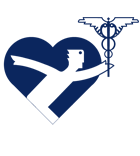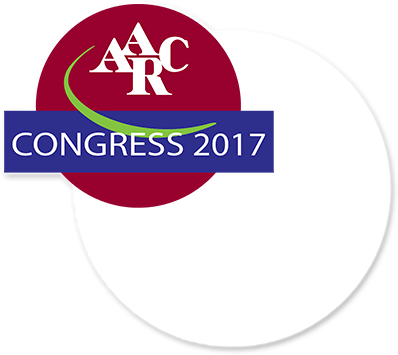Thursday, Oct. 5
7:30 am–8:30 am | Room Sagamore Ballroom
AARC Annual Business Meeting

Brian K Walsh PhD RRT FAARC/Co-Presiding
This is the official Annual Business Meeting of the AARC 2018 AARC Officers, Board of Directors, and Officers from the House of Delegates are installed. Reports from AARC leadership are presented. The meeting concludes with an address from 2017/2018 AARC President, Brian K. Walsh.
8:00 am–6:00 pm | Room Room 206/207
Sputum Bowl Preliminaries

Renee Wunderley BS RRT-NPS
Teams from the AARC State Societies compete in the preliminary competitions. The top four teams will advance to the Finals on Friday evening, October 6 along with the Student Sputum Bowl finalists.
Sponsored by
8:40 am–9:30 am
5th Annual Thomas L Petty Memorial Lecture

8:40 am–9:30 am | Room Sagamore Ballroom | Clinical Practice
Meeting the Challenge of COPD Care in the US
Meilan Han MD , Ann Arbor MI
COPD is a leading cause of death in the US, and yet it remains underdiagnosed and access to critical services for these patients remain challenging. Patients with COPD and the providers who care for them face unique obstacles, particularly in the current healthcare environment. The impact of these obstacles on patient care and how we as providers can help to address them will be discussed.
9:35 am–10:05 am | Room Room 103/104
Neonatal-Pediatrics Section Membership Meeting

Section members meet to determine their needs and priorities, as well as how to use AARC resources to accomplish them. All Congress attendees, including section non-members, are invited to attend and participate.
10:00 am–11:55 am | Room Room 107/108
Open Forum Poster Discussion #3
Researchers and clinicians present findings of studies on aerosol therapy, mechanical ventilation, neonatal and pediatric care, education, management, and every other mode of practice in our profession.
Supported by an unrestricted education grant from
10:00 am–11:55 am | Room Room 109/110
Open Forum Poster Discussion #4
Researchers and clinicians present findings of studies on aerosol therapy, mechanical ventilation, neonatal and pediatric care, education, management, and every other mode of practice in our profession.
Supported by an unrestricted education grant from
10:30 am–11:05 am | Room Wabash 1 | Clinical Practice
Respiratory Therapists as Members of the Multi- Disciplinary ALS Team

Garner Faulkner II BS RRT AE-C, El Cajon CA
Amyotrophic lateral sclerosis (ALS) is not a respiratory disease yet respiratory failure is the leading cause of death and terminal dyspnea is a major fear among patients with ALS. Respiratory therapists are uniquely qualified to provide much of the care and support these patients so desperately need to improve their quality of life and extend their survival. This lecture will focus on the unique features of neuromuscular respiratory failure treatment goals and the important role of the respiratory therapist in the management of these patients.
10:30 am–11:05 am | Room Wabash 2 | Management
How To Lie With Statistics and Figures - What's a "p" Anyway

Dean R. Hess PhD RRT FAARC , Boston MA
To many, if not most of us in health care leadership "research" is not something we learned in RT school. Additionally many of us do not have the resources to do clinical research within our organization. This lecture will take some of the mystery out of the language of research.
10:30 am–11:05 am | Room Wabash 3
High-Frequency Ventilation During Transport

Dario Rodriquez Jr. MSc RRT FAARC , Cincinnati OH
The ability to utilize high-frequency ventilation during patient transport has been realized during the past few years. This lecture will look at the pros and cons of high frequency ventilation during transport.
10:30 am–11:05 am | Room Room 101/102
Snoozing on Performance: The Mental and Physical Connection with Sleep

Dennis J Guillot PhD RRT CSCS , Thibodaux LA
This presentation will discuss the effect of sleep deprivation on physical and mental performance and address strategies to limit the effect of deprivation.
10:30 am–11:05 am | Room Room 123/124
The Other Side of Midnight - A Personal Journey into Palliative and Hospice Care

Kim Bennion MHS RRT CHC , Salt Lake City UT
The presenter will share her intimate journey with her mother during the final stages of her COPD as she sought palliative and hospice care orders, end-of-life discussions, and the impact of "last dose syndrome."
10:30 am–11:45 am
State Medicaid and Payer Innovation Models

10:30 am–11:05 am | Room Room 105/106 | Clinical Practice
Two-Year Results of an RT Designed and Led Medicaid Initiative with Pay-for- Performance Reimbursement Model
Gene Gantt RRT FAARC , Livingston TN
For over two years Tennessee Managed Medicaid patients in skilled nursing facilities have benefited from an RT designed and led quality initiative. Not only did the initiative improve outcomes in the tracheostomized and ventilator populations, it also resulted in substantial savings to the payers and state.

11:10 am–11:45 am | Room Room 105/106 | Clinical Practice
New York State Innovative COPD Medicaid Reform
Frederic D Seifer MD FCCP , Potsdam NY
Like many other states New York is taking a hard look at health utilization. More and more health plans are recognizing an overwhelming need to reform the way chronic disease management is delivered. Medicaid in NY State or DSRIP "Delivery System Reform Innovation Program" has approved a program pilot which funds the use of RTs in the outpatient management of COPD in upstate New York. This lecture will describe the program and its intended outcome.

11:50 am–12:25 pm | Room Room 105/106 | Clinical Practice
Medicaid-Funded RT-Led Population Health Models
Zach Gantt RRT, Livingston TN
Managed Medicaid has become fertile ground for RT-led innovations in population health from COPD to ventilator care. This lecture will describe Medicaid-funded innovations.
10:30 am–12:25 pm
Neonatal Respiratory Care 2017

10:30 am–11:05 am | Room Room 103/104 | Neonatal/Pediatric
The Respiratory Therapist in the Delivery Room: Management of Neonatal Airway Emergencies
Janet Lioy MD, Philadelphia PA
Airway emergencies in the delivery room can rarely be anticipated. A chaotic environment can arise suddenly and lead to a fatal outcome if caregivers are not trained, prepared, or properly equipped. Role awareness, airway knowledge, and hands-on experience in the emergency setting must be discussed, reviewed, and practiced regularly. This presentation will discuss these key aspects from the respiratory care perspective.

11:10 am–11:45 am | Room Room 103/104 | Neonatal/Pediatric
Infant PFTs - Purpose, Practice, and Data
Stephanie Davis Indianapolis IN, Indianapolis IN
Despite the commonplace use of pulmonary function testing in children and adults, the technology and experience with PFTs in the infant population continues to lag. This presentation by a pioneer in the field will review the purpose and practice of infant pulmonary function testing including a discussion of the usefulness of the data obtained.

11:50 am–12:25 pm | Room Room 103/104 | Neonatal/Pediatric
When Conventional Ventilation Fails for the Neonate: What To Do Next?
Keith Hirst MS RRT- ACCS RRT-NPS AE-C , Wilmington MA
How do we define failure of conventional ventilation in neonates? How should the clinician decide when to move beyond conventional ventilation and what should be the next steps? This presentation will review the available data and proposed potential approaches.
Funded through an unrestricted educational grant from
10:30 am–12:25 pm
Ventilator Waveforms - Reading Between the Lines

10:30 am–11:05 am | Room Room 120-122
Using Waveforms To Evaluate Asynchrony
David Vines MHS RRT FAARC , Chicago IL
Mechanical ventilation waveforms are essential for evaluating asynchrony. This talk will demonstrate the most common kinds of asynchrony and provide examples of each. Ventilator changes to alleviate asynchrony will be discussed.

11:10 am–11:45 am | Room Room 120-122
Advanced Ventilator Waveforms
Keith D Lamb RRT-ACCS FCCM , Warrenton VA
This lecture will describe ventilator waveforms that require additional maneuvers including pressure volume curves, flow volume curves, and evaluating stress index.

11:50 am–12:25 pm | Room Room 120-122
Esophageal Pressure Monitoring
Rich Kallet MS RRT FAARC , San Francisco CA
Esophageal manometry allows the determination of transpulmonary pressure and chest wall mechanics. This lecture will describe the utility of esophageal manometry for setting PEEP, evaluating the work of breathing, and guiding lung protection.
11:10 am–11:45 am | Room Wabash 1 | Pulmonary Function
PFTs in the Neuromuscular Disease Patient: More than Meets the Eye

Garner Faulkner II BS RRT AE-C , El Cajon CA
This presentation is intended to help the RCP/PFT specialist identify the importance of PFTs in the patient with neuromuscular disease (NMD). Often PFTs in the NMD patient are also used as a screening tool for implementation of further respiratory modalities. Since no one specific test predicts the course of NMD, it is suggested that multiple types be used to increase the precision of diagnosis and improve monitoring.
11:10 am–11:45 am | Room Room 123/124 | Management
Determining the Value of the Respiratory Therapist- What Does the Future Respiratory Therapist Look Like?

Robert L Chatburn MHHS RRT-NPS FAARC , Cleveland OH
As our health care system transitions to a value-based system, the manager of respiratory care must determine the clinical areas of practice in which the respiratory therapist plays the most important role. This lecture will show managers how to determine the value of the respiratory therapist within this new environment.
11:10 am–11:45 am | Room Wabash 3
ECMO During Patient Transport

Edd Shope RN NRP , Raleigh NC
Since the early 2000s transportation of a patient on ECMO has risen slowly but steadily. This lecture will discuss the latest issues and resolution of issues related to the transportation of these patients. The 2015 guidelines for transportation of ECMO patients will also be reviewed.
11:10 am–11:45 am | Room Room 101/102
Adaptive Servo Ventilation and Central Sleep Apnea

Jessica Schweller MS CNP RRT-SDS RN , Columbus OH
This presentation will include discussion and interactive case presentation regarding indications, device algorithms, and troubleshooting of adaptive servo ventilation for central sleep apnea.
11:10 am–12:25 pm
How To Implement a New Ventilator Platform
Funded through an unrestricted educational grant from

11:10 am–11:45 am | Room Wabash 2 | Management
How To Choose the Right Machine
Dave Crotwell RRT-NPS FAARC , Seattle WA
Given the increasing scrutiny of capital expenditures, our selection of high technology and its attendant costs is more important than ever. This discussion will address how to select the right ventilator for your institution or unit from kicking the tires to performing a trial and selecting the machine.

11:50 am–12:25 pm | Room Wabash 2 | Management
Roll Out: Once Selected How to Roll out the New Fleet of Ventilators
Matthew McNally BS RRT , Lebanon NH
Once a trial is completed and the device is selected this presentation will address the process associated with implementing the new ventilator platform.
11:30 am–3:30 pm | Room TBA
Open Forum Posters Only #1
Researchers and clinicians present the results of their work in this Posters Only session. Authors are available from 12:00 pm - 1:30 pm for questions and interaction.
Supported by an unrestricted education grant from
11:50 am–12:25 pm | Room Wabash 3 | Clinical Practice
Equipment Configuration During Transport: How Do You Do It?

Tabatha Dragonberry MEd RRT-NPS AE-C ACCS CPFT C-NPT , Coral Springs FL
As transport RTs we work in confined spaces and look to maximize equipment configuration. For this lecture we reached out to the transport RT community comparing their set-ups and what works for them. Learn from your peers how to configure equipment for transport.
11:50 am–12:25 pm | Room Room 101/102
The Use of Auto PAP for Hospital Patients

Jessica Schweller MS CNP RRT-SDS RN , Columbus OH
This presenter will discuss use of auto PAP in the inpatient setting and the implications on the hospital and the RT with regards to cost, training, and supply.
11:50 am–12:25 pm | Room Wabash 1
Strategies to Optimize Outcome for Respiratory Failure in the Immunocompromised

Courtney Rowan MD, Indianapolid IN
While managing the immunocompetent pediatric patient with ARDS can be challenging, the approach to the severely immunocompromised is even more difficult. This presentation will review the available literature and discuss various approaches to optimize outcome for respiratory failure in the immunocompromised child.
11:50 am–12:25 pm | Room Room 123/124
Improving Patient Safety Through Reporting of Adverse Events

Thomas Lamphere BS RRT-ACCS RPFT FAARC , Sellersville PA
This lecture reviews adverse event reporting and how it relates to health care workers, and specifically, to a respiratory therapist. The reasons practitioners have difficulty in reporting events will be explored and up-to-date state/national statistics will be reviewed.
Funded through an unrestricted educational grant from
12:30 pm–2:55 pm | Room Room 107/108
Open Forum Poster Discussion #5
Researchers and clinicians present findings of studies on aerosol therapy, mechanical ventilation, neonatal and pediatric care, education, management, and every other mode of practice in our profession.
Supported by an unrestricted educational grant from
12:30 pm–2:55 pm | Room Room 109/110
Open Forum Poster Discussion #6
Researchers and clinicians present findings of studies on aerosol therapy, mechanical ventilation, neonatal and pediatric care, education, management, and every other mode of practice in our profession.
Supported by an unrestricted educational grant from
12:30 pm–1:00 pm | Room Room 105/106
Long Term Care Section Membership Meeting

Section members meet to determine their needs and priorities, as well as how to use AARC resources to accomplish them. All Congress attendees, including section non-members, are invited to attend and participate.
12:30 pm–1:00 pm | Room Room 101/102
Sleep Section Membership Meeting

Section members meet to determine their needs and priorities, as well as how to use AARC resources to accomplish them. All Congress attendees, including section non-members, are invited to attend and participate.
12:30 pm–1:00 pm | Room Wabash 3
Surface To Air Transport Section Membership Meeting

Section members meet to determine their needs and priorities, as well as how to use AARC resources to accomplish them. All Congress attendees, including section non-members, are invited to attend and participate.
1:15 pm–1:45 pm | Room Wabash 1
Home Care Section Membership Meeting

Section members meet to determine their needs and priorities, as well as how to use AARC resources to accomplish them. Congress attendees, including section non-members, are invited to attend and to participate.
1:15 pm–1:45 pm | Room Wabash 2
Management Section Membership Meeting

Section members meet to determine their needs and priorities, as well as how to use AARC resources to accomplish them. All Congress attendees, including section non-members, are invited to attend and participate.
1:45 pm–2:20 pm | Room Room 105/106 | Education
The Importance of Cultural Awareness

Crystal Dunlevy EdD RRT , Columbus OH
We cannot expect everyone to be culturally competent with every minority group (ethnic and otherwise), but we should all make an effort to be culturally sensitive and aware. This presentation will cover what questions to ask (and how to ask them) in order to make every patient feel like they are being heard and respected with regard to their cultural needs.
1:45 pm–2:20 pm | Room Wabash 1 | Clinical Practice
Telehealth and Homecare Interventions for COPD Readmission Prevention

Troy Whittaker BS MHA RRT , Salt Lake City UT
This lecture is a report on the results, patient outcomes, and readmission data of the Tele-COPD pilot program currently underway at Intermountain Healthcare in Salt Lake City, Utah.
1:45 pm–2:20 pm | Room Wabash 2 | Management
Professional Evolution: Transitioning from Staff Therapist to Supervisor/ Manager

Amanda Richter MHA RRT-NPS ACCS RPFT , Kempner TX
With the continued growth of technology and new practices in respiratory therapy across the country many staff therapists are finding opportunities to professionally grow into the supervisory ranks. Although many good therapists feel prepared for such a transition, some find it more difficult than anticipated. This presentation discusses components of preparation for a successful transition into supervising a therapy team. This presentation will explore strategic and tactical tools as well as philosophical and practical points to consider.
1:45 pm–2:20 pm | Room Wabash 3 | Clinical Practice
Lights or No Lights? Fly or Don't Fly? Controversies in Transport

Edd Shope RN NRP , Raleigh NC
This lecture will discuss both current and ongoing controversies in transport. Topics will include the decision to use or not use emergency lights during ground transport and the decision to transport a patient by air vs ground transport and more.
1:45 pm–2:20 pm | Room Room 120-122
Update on Ventilator- Associated Pneumonia

Rich Kallet MS RRT FAARC , San Francisco CA
VAP continues to be a common and expensive complication in the hospital. This lecture will focus on respiratory care interventions to prevent and treat VAP.
1:45 pm–2:20 pm | Room Room 101/102
Navigating the Sleep- Disordered Breathing Course: Diagnostics to Successful Treatment

Kimberly S Wiles RRT CPFT , Kittanning PA
Numerous obstacles exist in the diagnosis and treatment of sleep-disordered breathing. This lecturer will discuss how these obstacles do not have to be road blocks but only "bumps in the road." Developing a model that overcomes barriers drives quality outcomes; a successful patient experience is key to self-management.
1:45 pm–2:20 pm | Room Room 103/104 | Neonatal/Pediatric
Ventilatory Care of the Infant with Severe Bronchopulmonary Dysplasia

Ioana Cristea MD , Indianapolis IN
Despite decades of experience in the management of the infant with bronchopulmonary dysplasia, ventilator management remains inconsistent. This presentation will describe optimal approaches to ventilator management including approaches to assist with determining the optimal PEEP for each patient.
1:45 pm–5:00 pm
Respiratory Care Symposium

1:45 pm–2:20 pm | Room Room 123/124 | Clinical Practice
What Could I Possibly Publish in Respiratory Care?
Jeffrey M Haynes RRT RPFT FAARC , Pembroke NH
This presentation will provide advice for persons who wish to submit their research to Respiratory Care.

2:25 pm–3:00 pm | Room Room 123/124 | Clinical Practice
Retrospective Studies and Quality Assurance Projects
Dean R Hess PhD RRT FAARC , Boston MA
This lecture will address the potential for and the pitfalls of publishing retrospective studies and quality assurance projects.

3:05 pm–3:40 pm | Room Room 123/124 | Clinical Practice
Equipment Evaluations: Lung Models, Ventilators, Filters, and Nebulizers
Robert M Kacmarek PhD RRT FAARC , Boston MA
This presentation will cover the good, bad, and ugly of equipment evaluation.
Funded through an unrestricted educational grant from

3:45 pm–4:20 pm | Room Room 123/124 | Clinical Practice
Narrative Reviews, Systematic Reviews, and Meta-Analyses
Ellen Becker PhD RRT-NPS RPFT AE-C FAARC , Chicago IL
A discussion of how narrative reviews, systematic reviews, and meta-analyses can be published in Respiratory Care.

4:25 pm–5:00 pm | Room Room 123/124 | Clinical Practice
Anatomy of the Research Paper
Rich D Branson MSc RRT FAARC , Cincinnati OH
This lecture will provide an overview of the important elements of a research paper.
2:25 pm–3:00 pm | Room Room 105/106 | Education
Plowing the Path for RTs To Earn Bachelor's Degrees

Ellen Becker PhD RRT-NPS RPFT AE-C FAARC , Chicago IL
The AARC set a goal in 2015 for 80% of all respiratory therapists to have a bachelor's degree by 2020. This presentation will highlight the ways that educators in associate and baccalaureate degree programs can help RT students in associate degree programs plan to complete a bachelor's degree. Further, RT managers will learn how to guide working therapists toward helpful resources for completing this advanced degree.
2:25 pm–3:00 pm | Room Wabash 1 | Clinical Practice
Utilizing Telehealth To Manage Neuromuscular Disease Patients

Micaela Sarazen RRT BSRT , Sacramento CA
This lecture will explore a program (utilizing FaceTime and iChat devices) that allows neuromuscular patients and their caregivers to receive quick answers to their questions. A respiratory support pilot program showed improvements in all outcome parameters and will be presented at this lecture.
2:25 pm–3:00 pm | Room Wabash 3
TU-BE or Not TU-BE? That Really is the Question - Bedside Decisions in Critical Care Transport

Jon C Inkrott RRT-ACCS , Orlando FL
It has been well established and demonstrated that noninvasive ventilation (NIV) can reduce intubation and mortality rates in patients with acute exacerbation of respiratory failure in COPD and congestive heart failure patients. By contrast, the benefit of NIV in the de novo hypoxemic patient remains unclear. So when is NIV failing? When do you intubate the patient prior to transport? We will explore case studies which define these patients and discuss the outcomes.
Funded through an unrestricted educational grant from
2:25 pm–3:00 pm | Room Room 101/102
Why Are Circadian Rhythms Important for RCPs?

Lutana Haan MHS RRT RPSGT , Boise ID
An overview of the body's biological clock will be presented with a focus on an understanding of our own and our patients' responses to circadian timing. Learn methods to best interact with our 24-hour clock.
2:25 pm–3:40 pm | Room Wabash 2 | Management
PRO/CON: Specialize or Generalize Staffing Specialty Areas?


PRO: Matthew McNally BS RRT
, Lebanon NH
CON: Dave Crotwell RRT-NPS FAARC Seattle WA
Many respiratory care directors lead their departments to cover multiple specialized areas of care (MICU SICU PICU NICU ED). This is particularly challenging, especially with regard to deciding whether to create specialty-trained RTs who only work in these units or to train all RTs to cover all units. With both models, there are obvious advantages and disadvantages, as you'll hear from both presenters. Given the two sides to this issue, each of the presenters will do their best to convince you to select their methodology, both arguing that their model will provide the highest quality and most cost-effective care for their patients.
2:25 pm–5:00 pm
Noninvasive Respiratory Support

2:25 pm–3:00 pm | Room Room 103/104 | Neonatal/Pediatric
Neonatal Heated High Flow Nasal Cannula: Just Say No or Go with the Flow?
Rob DiBlasi BSRT RRT-NPS FAARC , Seattle WA
An increasing number of institutions are using heated high flow nasal cannula as a primary form of noninvasive respiratory support for infants. This presentation will explore the available data to improve our understanding of how HFNC works and how it can safely and effectively be used to reduce WOB, improve gas exchange, and reduce the need for invasive mechanical ventilation.
Funded through an unrestricted educational grant from

3:05 pm–3:40 pm | Room Room 103/104 | Neonatal/Pediatric
Working Towards Perfect: Optimizing NIV in the Neonate
Keith Hirst MS RRT- ACCS RRT-NPS AE-C , Wilmington MA
Noninvasive ventilation is being used more and more in the neonatal population. What strategies are best suited to optimize success? Why do some infants benefit from this approach while others fail? This presentation will examine strategies to maximize NIV success as well as objective criteria for failure.

3:45 pm–4:20 pm | Room Room 103/104 | Neonatal/Pediatric
Pediatric HFNC: Effective and Safe?
Natalie Napolitano MPH RRT-NPS AE-C FAARC , Philadelphia PA
The use of high flow nasal cannula in pediatrics is increasing at an exponential rate. This presentation will discuss the practice rationale and evidence behind the utilization of HFNC for children. The presenter will discuss effectiveness and safety with a focus on the medical literature.

4:25 pm–5:00 pm | Room Room 103/104 | Neonatal/Pediatric
Pediatric Noninvasive Ventilation: What Does the Research Say?
Dana Evans MHA RRT-NPS , Chicago IL
Noninvasive ventilation is a vital modality for the prevention of intubation in acutely ill pediatric patients. This presentation will review current evidence for the use of NIV in pediatric patients including patient selection, interface selection, management approaches, and patient compliance.
2:25 pm–5:00 pm
Guidelines Update - What You Must Know

2:25 pm–3:00 pm | Room Room 120-122
The 2017 ERS-ATS Guidelines for Noninvasive Ventilation
Stefano Nava MD, Bologna Italy
Noninvasive ventilation is the standard of care for COPD exacerbations. The role of NIV in other disease states is becoming increasingly clear. These guidelines define the role of NIV in hypoxemic respiratory failure and preventing reintubation.

3:05 pm–3:40 pm | Room Room 120-122
The 2017 ATS-ACCP Guidelines on Ventilator Liberation
Neil MacIntyre MD FAARC , Durham NC
Ventilator liberation (formerly weaning from mechanical ventilation) has undergone whole-scale revision in the last two decades. The use of spontaneous breathing trials and spontaneous awakening trials are the standards of care. This update will cover the newest guidelines.

3:45 pm–4:20 pm | Room Room 120-122
The 2017 ATS-SCCM Guidelines on Mechanical Ventilation for ARDS
Rich D Branson MSc RRT FAARC , Cincinnati OH
Ventilatory support of ARDS has changed markedly since the ARDSNet ARMA trial in 2000. In recent years the role of recruitment maneuvers, HFO inhaled vasodilators, and how to set PEEP have become clearer. This guideline uses GRADE methodology to identify treatment options with high-level evidence.

4:25 pm–5:00 pm | Room Room 120-122
The GOLD Guidelines for COPD
Neil MacIntyre MD FAARC , Durham NC
COPD continues to be a health care burden claiming lives and resources around the world. New guidelines for the treatment of COPD will be reviewed.
3:05 pm–3:40 pm | Room Room 105/106 | Education
Moving up the Ranks: Developing Career Ladder/ Job Enrichment Programs That Benefit Clinicians and Respiratory Schools

Diane Oldfather MHEd RRT FAARC , Rolla MO
In this era of "do more with less" it is often difficult to get buy-in from highly skilled RRTs to participate in the training of future therapists. What can be done to encourage their involvement? Is there a way to balance their workload career goals and participate in training students? Attend this presentation to discover how to develop potential tactics to benefit communities of interest, get more bang for your buck, and create a win-win situation!
3:05 pm–3:40 pm | Room Wabash 1 | Clinical Practice
Telehealth in Transitional Care and Population Health

Zach Gantt RRT, Livingston TN
Technology innovation in post-acute care offers the opportunity to extend care relationships into the post-acute arena. These innovations are hard to keep up with, hard to manage, and even harder to integrate into your current electronic charting/management systems. This presentation will outline the integration process.
3:05 pm–3:40 pm | Room Wabash 3
Resuscitation and Stabilization of the Adult Trauma Patient

Joe Hylton MA RRT-ACCS/NPS NRP FAARC , Charlotte NC
Patients experiencing illness from trauma require rapid assessment and often require critical interventions for stabilization. This presentation will discuss resuscitation and stabilization techniques along with life-saving interventions that can be performed.
3:05 pm–3:40 pm | Room Room 101/102
Noninvasive Ventilation in the Treatment of SDB and Obesity Hypoventilation

Meena Khan MD, Columbus OH
The presenter will give a discussion and interactive case presentation regarding indications, device types, and troubleshooting methods for noninvasive ventilation in SDB and obesity hypoventilation.
3:10 pm–5:05 pm | Room Room 107/108
Open Forum Poster Discussion #7
Researchers and clinicians present findings of studies on aerosol therapy, mechanical ventilation, neonatal and pediatric care, education, management, and every other mode of practice in our profession.
Supported by an unrestricted educational grant from
3:10 pm–5:05 pm | Room Room 109/110
Open Forum Poster Discussion #8
Researchers and clinicians present findings of studies on aerosol therapy, mechanical ventilation, neonatal and pediatric care, education, management, and every other mode of practice in our profession.
Supported by an unrestricted educational grant from
3:45 pm–4:20 pm | Room Room 105/106 | Education
Minimizing Implicit Bias

Crystal Dunlevy EdD RRT , Columbus OH
All of us carry implicit biases based upon a lifetime of experiences and interactions. It is important to be aware of these so that we can minimize the impact that they have on patient care and outcomes. This presentation will briefly review the definition of implicit bias as well as how to determine individual bias. The majority of the presentation will describe and discuss strategies that have been proven to reduce implicit bias
3:45 pm–4:20 pm | Room Wabash 1 | Clinical Practice
Dynamic Dialogue - The Key To Patient Engagement

Frederic D Seifer MD FCCP
One of the key challenges in chronic disease management is often related to bad behaviors that need to be changed by the patient. Respiratory care practitioners should lead the charge in understanding dynamic dialogue to cause the needed behavior modifications
3:45 pm–4:20 pm | Room Wabash 2 | Management
Balancing the Workload for Great Patient Care and Managing Productivity

Peggy Reed-Watts MS RRT , Saint Louis MO
The key vehicle to leveling the workload is by changing select respiratory services administration times. This requires support from pharmacy, nursing, and information technology. The speaker will describe 7 steps taken to implement a process that offered a stronger alternative to the current administration of respiratory scheduled services. Tools created and used during this process will be shared.
3:45 pm–4:20 pm | Room Wabash 3
Noninvasive Ventilation During Transport

Dario Rodriquez Jr. MSc RRT FAARC , Cincinnati OH
As the use of noninvasive ventilation has dramatically increased in recent years, the demand for transportation of these patients has also increased. This lecture will review difficulties encountered during transport of patients on NIV and the current literature on this growing practice.
3:45 pm–4:20 pm | Room Room 101/102
Alternative Treatment Options for Sleep Apnea

Peter Gay MD FCCP , Rochester MN
PAP therapy has been the standard treatment for obstructive sleep apnea but compliance remains a problem. This lecture will discuss alternative treatment options that exist for sleep apnea.
4:25 pm–5:00 pm | Room Wabash 1 | Clinical Practice
Adopting New HME Revenue Models in Chronic Care

Nicholas J Macmillan BGS RRT FAARC , Bargersville IN
Integrated Care Models (ICMs) and incentives for decreased readmissions are being explored as payer's transition away from traditional care models. Hospitals are beginning to partner with HME companies who can play a pivotal role in working with vulnerable patient populations. This session will identify key steps for HME RTs to prove their value with measurable data and deliverables that improve outcomes.
4:25 pm–5:00 pm | Room Wabash 2 | Management
RRT Case Manager - You Can Do It All!

Dianne L Lewis MS RRT FAARC , Naples FL
RTs are qualified to do hospital case management not just with pulmonary patients. This presentation will include a personal experience of one RRT who has done it and will explain how others can do so. Also, it will review the criteria for RRTs to take the case management certification and how the AARC enabled RRTs to qualify for the exam.
4:25 pm–5:00 pm | Room Wabash 3
Patient Safety During Inter- Facility and Intra-Facility Transport

Jon C Inkrott RRT-ACCS , Orlando FL
This presentation will expand on the definition of a Just Culture and relate this to the current practices used during inter- and intra-facility transport to ensure patient safety. It will also look at some of the pitfalls and mistakes that professionals make that can lead to a disastrous outcome for all involved.
Funded through an unrestricted educational grant from
4:25 pm–5:00 pm | Room Room 101/102
OSA: Preoperative Screening and Postoperative Care

Peter Gay MD FCCP , Rochester MN
Millions of patients undergo surgery every day that may have obstructive sleep apnea. In order to reduce the risk of adverse outcomes in the post-operative patient, it is imperative that we improve perioperative care by identifying patients with confirmed or suspected OSA. This lecture will discuss how perioperative programs can reduce the risk of adverse outcomes for OSA patients receiving sedation.
4:25 pm–5:00 pm | Room Room 105/106
Breaking Bad in the Lung Lab: Clinical Scenarios To Improve Quality and Enhance Safety

David M Wheeler M. Ed. RRT-NPS FAARC , Charleston SC
This discussion will utilize videos of human, canine, and porcine lungs in the ex-vivo state to illustrate the authenticities of conventional clinical interventions. This lecture will concentrate on clinical adjuncts that can both enhance safety and improve quality through mindful, evidence-based application of mechanical ventilation. Participants will see real lungs in real time authentically demonstrating the consequences of our interventions both strategic and unintentional.
